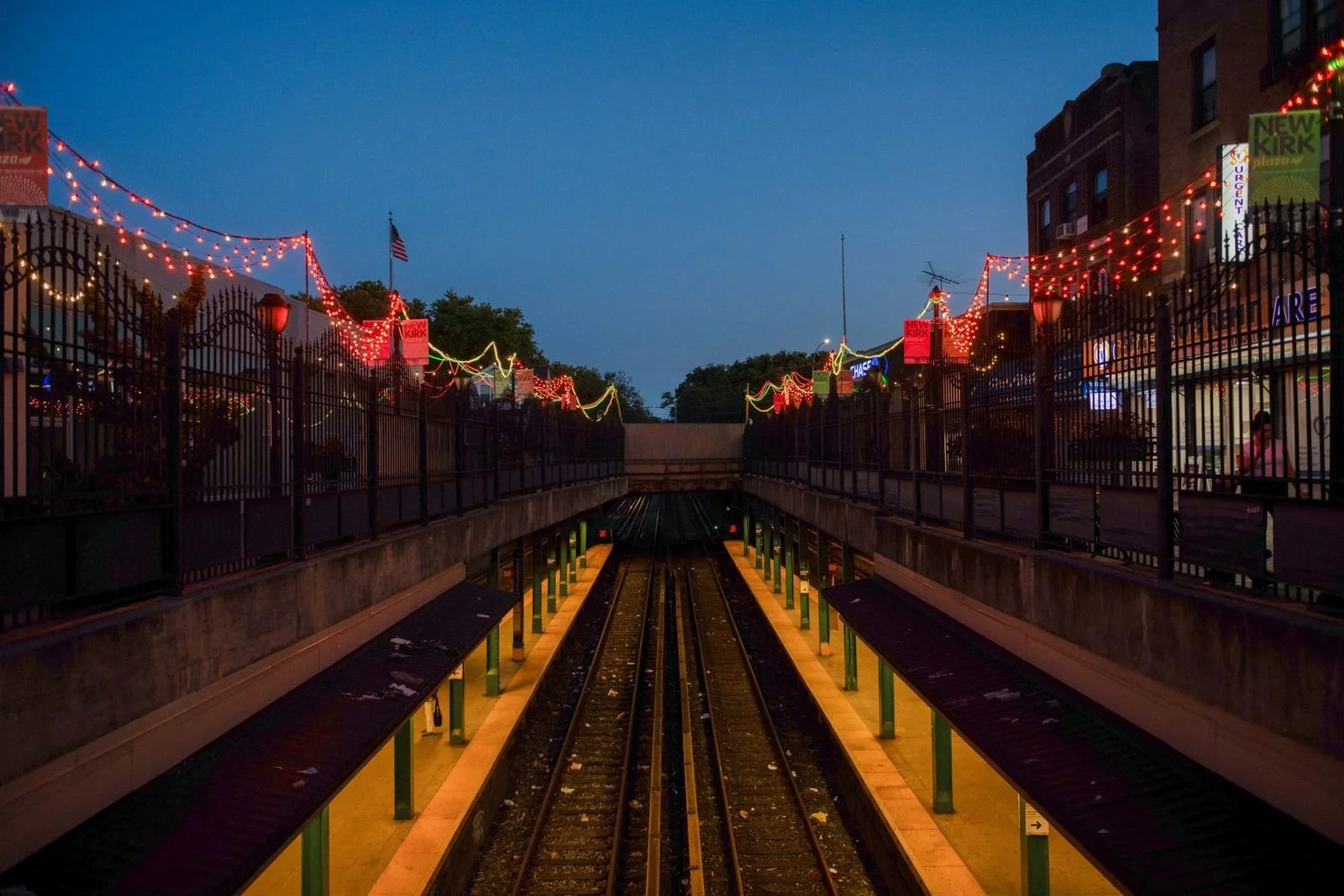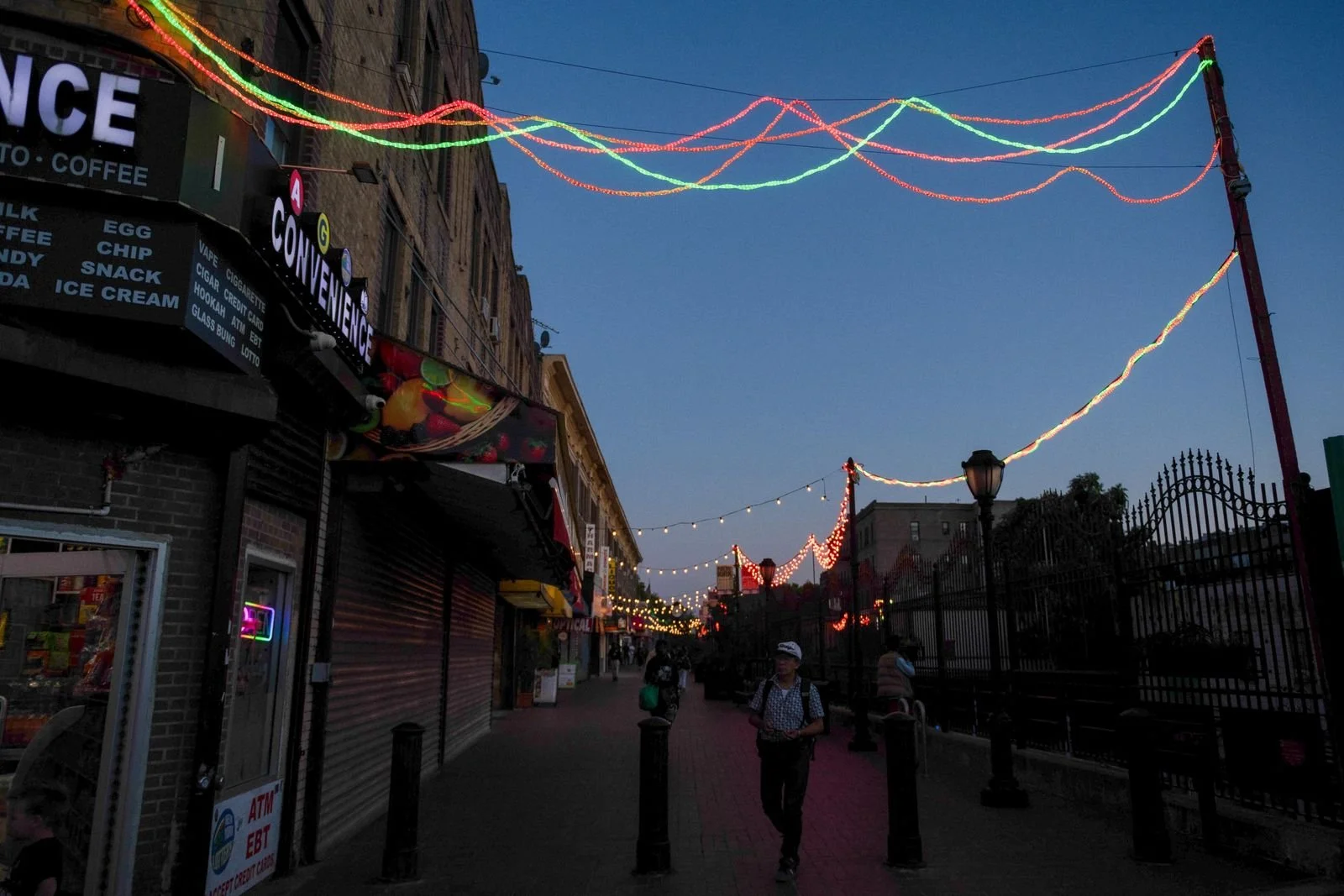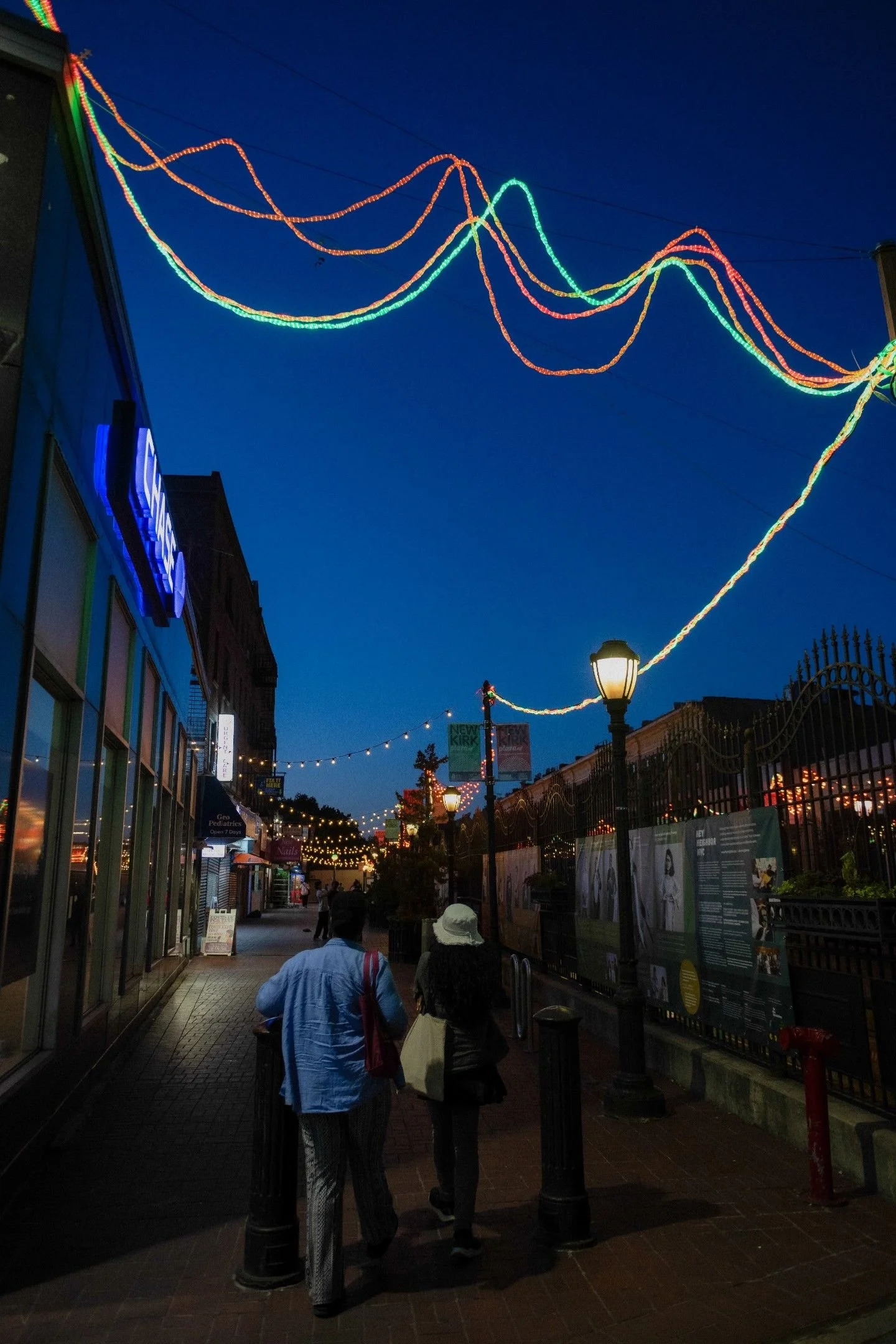Light Justice Showcase
We are thrilled and proud to showcase outstanding projects that embody Light Justice principles—engaging communities, educating stakeholders, empowering local voices, and successfully deploying projects within site, budget, and logistical constraints. These shining examples highlight the transformative power of light. If you have a project that aligns with these values, please reach out to us here.
Tenderloin Street Corner and Fence
San Francisco, CA, USA
Urban Designer : Mark Bonsignore
Lighting Design: Sol Light Studio
Completion: 2024
This art fence and light installation focuses on the transformation of a troubled street corner in San Francisco’s Tenderloin District through the thoughtful use of lighting and design. At an intersection in the heart of the neighborhood, a dark sidewalk bordered by a chain-link fence—choked with overgrown vegetation—had become a known hotspot for illegal drug activity. As night fell, this corner became a magnet for open drug use, creating an unsafe environment for local residents and businesses. To address this and help create ‘safe passages’ for residents through the neighborhood, Sol Light Studio was brought in, to collaborate on an intervention alongside urban designer and activist Mark Bonsignore, local business owners, and nonprofit organizations.
The initial community proposal called for cool floodlighting to deter illegal activity. However, Sol Light Studio and Bonsignore envisioned a more nuanced approach. The chain-link fence was removed and replaced with a Corten steel fence, featuring the logo of the adjacent Phoenix Hotel. Instead of casting light onto the sidewalk, the team illuminated the fence itself, transforming it into a neighborhood landmark. Narrow-beam linear lights graze the surface of the steel from both sides, creating a glowing vertical plane that redefines the visual language of the street corner.
Additional lighting was installed further down the sidewalk to highlight surrounding foliage, extending the illuminated vertical effect. This gentle and intentional use of light created not only a safer space but also a more inviting and aesthetically engaging environment. The intervention has had a noticeable impact: businesses are seeing more foot traffic, and senior residents from a nearby facility feel safer accessing transportation. Rather than harsh lighting, this design uses brightness as a tool for both comfort and transformation. It stands as a testament to how considered design can bring dignity and life back to overlooked urban spaces.
Shadow of a Face - Harriet Tubman Memorial
Harriet Tubman Square Park, Newark, NJ, USA
Architect: Studio Cooke John
Designer/Artist: Nina Cooke John
Lighting Designer: Bartholomew Lighting
Completion: 2023
“Shadow of a Face” is the newly installed monument to Harriet Tubman in Newark, NJ to honor her extraordinary life, and pay homage to Harriet Tubman’s life and the city’s role in facilitating the Underground Railroad. The monument, designed by artist and architect Nina Cooke John, replaces a Christopher Columbus statue in a prominent urban park, renamed Harriet Tubman Square. Ms. Cooke John’s monument portrays Harriet Tubman from two perspectives: as a larger-than-life figure rising over two stories tall and at eye level, where the relief of her face is approachable and earthly. Text is cut into the curving steel learning wall that wraps around the statue giving viewers a timeline of Tubman’s life and a history of Newark’ Black Liberation movement. Embedded into this memorial is a soundscape that provides an audio narrative by Newark's own Queen Latifah of Harriet’s life journey. A wall is adorned with mosaics made by community members, giving them a permanent place in this memorial.
The lighting design for this monument was developed through a design process that included intensive modeling, fabrication, and mock-ups to illuminate all of the critical elements. The lighting design is a balanced composition using a range of techniques. From the ingrade uplights washing a curved wall with engraved critical dates from Harriet's life, a ribbon of light integrated into the steel figurative structure, a carefully designed wall grazing/downlights integrated into the curved corten wall that highlights the story of Harriet Tubman's journey and connection to the community of Newark, New Jersey. A softly lit stone profile of Harriet invites the community to interact and touch her face. Finally, tucked into the top of the standing structure are three randomly programmed 4000K spotlights that shine through the structural ribbons to cast cooler shifting "moonlight" shadows mimicking her journey in the wilderness. As you walk around the monument, you subtly experience the movement of the shifting cooler shadows while listening to Newark's own Queen Latifah and others narrate stories about Tubman and the city’s history of Black liberation.
Jessie St and 6th St Upgrades
San Francisco, CA, USA
Urban Designer : Mark Bonsignore
Lighting Design: Sol Light Studio
Completion: 2024
The Jessie Street upgrade effort centers on the transformation of a narrow alley off 6th Street in San Francisco, using light as a tool for urban renewal. Located where the Filipino Cultural District begins and the Transgender District ends, this part of city sees a dramatic shift. Once a hub of theater activity, the area’s north side declined after the pandemic, with shuttered businesses and a stark contrast between deteriorating SRO units and new market-rate apartments. Jessie Street, in particular, became a hotspot for crime and illegal substance sales, underscoring the urgent need for intervention.
In response, the Office of Economic and Workforce Development (OEWD) collaborated with Sol Light Studio and Urban Designer Mark Bonsignore to reimagine the alley. Rather than simply increasing brightness, the team developed a façade lighting strategy to elevate the architectural presence of the buildings lining Jessie Street. Narrow uplights were used to highlight architectural features, especially the ornate cornices, giving the structures a sense of grandeur and identity.
This subtle yet powerful approach redirected attention from the alley itself to the surrounding buildings, encouraging foot traffic and drawing people toward nearby businesses. The revitalization was further enriched through public art. Community-selected local artists were commissioned to create murals on both sides of the alley, funded by a neighboring business. These artworks were enhanced with high-quality lighting, making them visible and appreciated even at night.
Through community engagement, thoughtful design, and support from OEWD, the project not only improved the physical environment but also fostered a renewed sense of pride and possibility. Jessie Street now serves as a model for how lighting and art, when used intentionally, can begin the shift in perception a of public spaces, bringing dignity, safety, and vibrancy back to overlooked corners of the city.
Filipino District Mural
San Francisco, CA, USA
Urban Designer : Mark Bonsignore
Lighting Design: Sol Light Studio
Completion: 2024
The Filipino District Mural project highlights the use of public art and lighting to restore cultural identity and pride to a neglected area of San Francisco. While Market Street is known for its vibrancy, its character shifts after 5th Street, where homelessness and urban decline become more visible. At 6th Street, the entrance to the Filipino Cultural District, a once-grand historic hotel—now a low-income single-room occupancy building—stood with a vast, blank façade facing the remnants of the theater district.
Urban Designer Mark Bonsignore, in collaboration with the Office of Economic and Workforce Development (OEWD) and SOMA Pilipinas, saw potential in this empty wall. Together, they imagined it as a gateway into the cultural district. Renowned artist Allison Hueman, drawing on her Filipino heritage, was commissioned to create a mural that honors the rich history of the community. Sol Light Studio was brought in to bring the mural to life after dark.
The lighting challenge involved evenly illuminating the 50-foot-tall mural while minimizing glare and ensuring durability in an outdoor urban environment. Initial plans called for mounting fixtures on a nearby terrace with direct access to power, but late-stage changes forced the team to relocate to a more distant building—one without a power source. In response, the team designed and installed a solar-powered lighting system with battery storage, allowing the project to proceed sustainably and autonomously.
By lighting this monumental mural, the project creates a landmark that honors Filipino identity and reclaims space in a district long overlooked. The illuminated artwork not only beautifies the streetscape but also restores a sense of pride, heritage, and belonging for the local community. This effort demonstrates how design, technology, and cultural storytelling can combine to revitalize public space in meaningful, lasting ways.
Urban Braids
Brooklyn, NY, USA
Lighting Design: Leni Schwendinger Light Projects
Completion: 2024
Urban Braids is the newest addition to artist Leni Schwendinger’s “D.I.Y. Lighting” public space portfolio of dynamic, colorful braided light structures. Suspended on iron gates that edge Newkirk Plaza, the art installation spans the entire site. This unique approach employs community participation to innovate with everyday string lighting to create an interplay of safety and joyful experiences.
Urban Braids was commissioned by Flatbush Development Corporation. The location, a mall which opened in 1913, is is predominantly composed of mom-and-pop stores.The plaza consists of two parallel walkways, “open cut” and raised above a New York City subway station. The Q and B trains serve 2-million straphangers per year. The project was funded by New York City’s Small Business Services grant as part of their Commercial District Lighting initiative for 15 NYC neighborhoods. The intent is to boost local businesses and foster community engagement by creating a vibrant, well-lit environment for shopping, strolling, and commuting.




























